 |
|

|
 |
TABLE of CONTENTS
|
Margaret Anderson Kelliher named new MnDOT head |
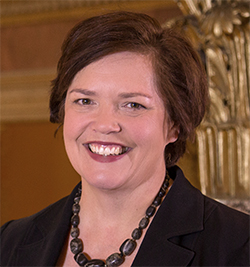
Margaret Anderson Kelliher was selected as the new MnDOT commissioner. |
Governor-elect Tim Walz appointed Margaret Anderson Kelliher to serve as MnDOT’s next commissioner, effective Jan. 8, when the new administration takes office. The announcement came at a news conference that Walz and Lt. Governor-elect Peggy Flanagan held at the capitol Dec. 18.
“Margaret is a proven and dedicated leader who will build coalitions to improve our state’s transportation system,” Flanagan said in a news release dated Dec. 18. “She has the skills, dedication, and years of knowledge to tackle our state’s most pressing transportation needs.”
“I am honored to be selected by Governor-elect Walz and Lt. Governor-elect Flanagan to lead the Minnesota Department of Transportation,” said Kelliher. “The work that we can do together—staff, stakeholders, community members—and working with the Legislature to ensure a sustainable transportation system for Minnesota’s future needs is exciting and will require us to build on the legacy of strong investment and create our transportation and transit system of the future.”
Kelliher is Minnesota’s 10th commissioner of transportation since the agency was formed in 1976, and is only the second woman to hold that title. Another nine commissioners led MnDOT’s predecessor agency, the Minnesota Highway Department, since its creation in 1917.
Kelliher brings both leadership and transportation experience to her new job, including having served two terms as the Speaker of the Minnesota House during her 12 years in the Legislature. As House Speaker, she oversaw the Transportation and Transit Funding package in 2008, which created an investment of new and dedicated funds into Minnesota’s bridges, roads and transit system. She served 10 years on both the Transportation Policy and Transportation Finance Committees.
She also has served on many volunteer community boards, including the Governor Dayton’s Broadband Task Force (which she chaired), Minnesota State (formerly Minnesota State Colleges and Universities), Greater Metropolitan Workforce Development Council, and Textile Center Board of Minnesota.
Kelliher graduated from Harvard’s Kennedy School of Government with a Master’s in Public Affairs and holds a BA in Political Science from Gustavus Adolphus College.
Kelliher lives in Minneapolis and is married with two adult children. Two of her uncles, Blaine Himmelman (Materials Lab) and Dale Himmelman (Mankato District), were former MnDOT employees.
Click here for more information. |
 |
|

|
 |
TABLE of CONTENTS
 |
Out like a lion: Late 2018 snowstorms bring multiple challenges to maintenance crews |
By Chris Joyce
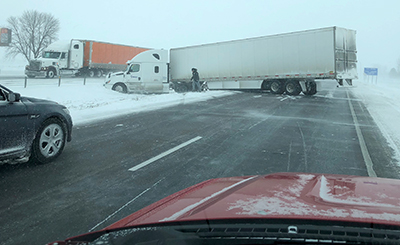
Strong wind gusts up to 39 mph contributed to several semi-trucks going off the road Dec. 27 in the Moorhead area. Photo by Ryan Smith |
The last week of December brought a variety pack of winter challenges for motorists and maintenance crews as two big storm systems pushed through the state on New Year’s Eve and on Dec. 26-28.
“2018 is going out like a lion,” said Kevin Gutknecht, Communications director and chief MnDOT spokesperson, in an interview Dec. 31 with Minnesota Public Radio. It was one of dozens of media interviews he and other public affairs staff statewide conducted throughout the week advising motorists to check 511mn.org for the latest road conditions before heading out.
High winds and blowing snow that caused whiteout conditions, followed by double-digit below zero wind chills, were the story for much of western Minnesota on Dec. 31, according to Emma Olson District 2/District 4 public affairs coordinator. For a short time, MnDOT issued a “no travel” advisory on state and federal highways in Clay, Big Stone, Stevens, Traverse and Wilkin counties because of dangerous driving conditions.
Sandra Schlagel, District 8 public affairs coordinator, also noted “no travel” advisories had been issued for portions of eight highways in their area, most of them along the South Dakota border.
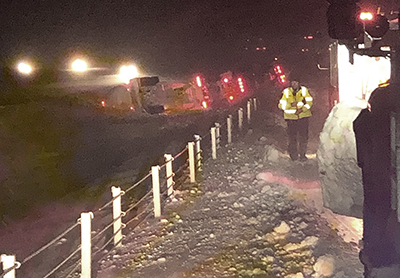
I-94 had a temporary lane closure between Evansville and Brandon Dec. 27 due to a tanker of butane that tipped over in the median. Photo by Lonnie Hoffman |
Previously, the Dec. 26-28 storm brought a mix of snow and rain, fluctuating temperatures and 35-plus mph wind, dumping as much as two feet of snow on the North Shore of Lake Superior compared to 1.2 inches in Owatonna, according to the National Weather Service.
High winds created limited visibility and hazardous driving conditions, forcing MnDOT to issue “no travel” advisories in some areas and temporarily close Hwy 14 from Tracy to Hwy 59 on Dec. 28 due to drifting snow and multiple vehicles blocking the road. In the Moorhead area, strong winds contributed to several semi-trucks going off the road.
Metro District had nearly 200 plows out during the event, according to Erik Shelstad, transportation operations supervisor 2 at the Cedar Avenue truck station. In one shift alone, crews dealt with plowing and refreeze issues, and handled two trucks being hit—one from behind and the other sideswiped. (No one was injured, he said.)
Additionally, a bridge crew had to be called in to make temporary repairs after a bus hit and put a hole in a wall on Interstate 94 near downtown Minneapolis.
“And, just to mix it up some, a transformer near Hwy 280 and Energy Park Drive exploded, causing a power line to drop to an unsafe height,” Shelstad said. Crews closed the ramp while Xcel Energy made repairs.
For tips on safe winter driving, go to www.mndot.gov/workzone/winter.html. For real-time traffic and travel information in Minnesota, visit www.511mn.org or get the free smartphone app at Google Play or the App Store.
Motorists thank snowfighters for their efforts
Since Dec. 26, dozens of posts to MnDOT’s Facebook and Twitter accounts recognized the efforts of maintenance staff statewide in the ongoing battle of keeping state roads clear of snow and ice. Comments about the work done on 2018’s last weather events included:
- I can’t tell you how much I appreciate your plow and salters! No one better! I drive from Delano to MSP International airport 5-6 days a week. I work for American Airlines and everyone at work gauges the roads by whether or not I can make it in. I’ve worked there 7 1/2 years and have never NOT been able to get to work! Your plowers are amazing and I’m so grateful and thankful for them. Please let them know I truly appreciate all they do to keep us all safe.
- The roads yesterday and today were wonderful. Drove 94 westbound into St. Paul without any issues. Thank you to your hard working staff.
- I just wanted to say thank you for being out yesterday and clearing the roads. I traveled from Duluth to Anoka and back, and all things considered, the roads were in really good shape. So I just wanted to thank you for the hard work and long hours.
- Bravo! I just had a great drive into work, well done out there!! Thanks!
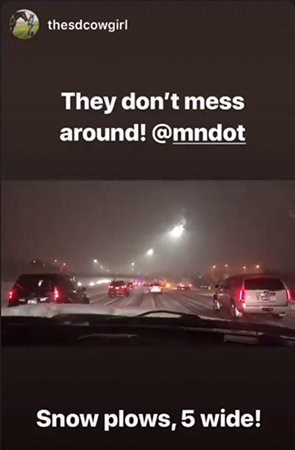
- I am going to say it again. Minnesota Department of Transportation doesn’t get enough credit. I can honestly say the Northwest + West Central region / #MoorheadMN does a wonderful job - THANK YOU for all you do. #MoorheadProud #onlyinMN
- Thank you for the condition of I94 on my way to Fargo. Roads were amazing!
- Please send a big thank you to all the plow drivers between Big Falls and Park Rapids on 71!!! Much obliged to them!
- Tell your pals at DOT they did a great job on 212 and 284 this morning!
- Just want to say Thank You to all the drivers that were out last night. My drive this morning was dry and ice free, even the Bloomington Ferry Bridge.
- Great workers with great equipment. They keep the state moving! A million thanks!
- Thanks, MNDOT for keeping our families safe!
- Thank you from Brainerd.
- A huge kudos to MnDOT! The roads this am were great! Some people still need to slow down, but the roads were actually really good! #MNwx
- Thank you so much - the commute today was so much better than what I expected! 494 was clear and dry from Woodbury to Edina - that is not a small feat considering the weather we have had. BRAVO!
- Early morning drive to the Cities and highly impressed with road conditions, despite not-great weather. Thank you!
- Zero troubles as we drove all over this morning! Thank you!! #MNWinter
- This. This is how you snowplow. #OnlyinMN
- You guys & gals rock!
|
|
 |
|

|
 |
TABLE of CONTENTS
|
Governor's Advisory Council on Connected and Automated Vehicles releases recommendations |
By Sue Roe
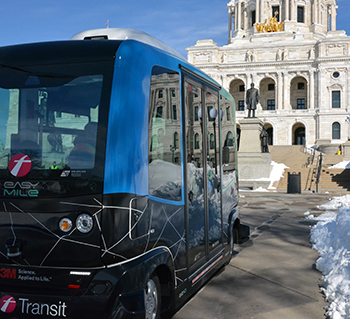
Legislators and MnDOT employees took rides on an automated shuttle bus outside the Capitol March 7. The automated shuttle bus was in Minnesota during the 2017-2018 winter months to test how the vehicle operated in snow and cold weather. Photo by Sue Roe |
The Governor’s Advisory Council on Connected and Automated Vehicles released a report in December outlining recommendations to increase safety, enhance mobility options, expand the economy, and maximize health and the environment. The recommendations were made to keep pace with the growing number of states that already have legislation for connected and automated vehicles and to ensure Minnesotans benefit from the technology.
The report is the result of Gov. Mark Dayton’s March 5, 2018, executive order, which established the advisory council and directed it to recommend changes to statutes, rules and policies based on stakeholder and public input. The report also recommends updating the Minnesota Data Practice Act to protect the personal data of people traveling in automated vehicles and develop security protocols to address cyber security risk.
Recommendations include passing legislation to authorize a pilot program for the safe testing of automated vehicles and a program for truck platooning, which allows two or more vehicles equipped with connected technology to travel in a convoy exempt from the following distance requirements. The report also recommends developing a public engagement plan to continue working with communities to help guide future CAV policy and hold CAV demonstrations to provide Minnesotans opportunities to learn how the technology can improve lives.
“If Minnesota doesn’t take any action to anticipate CAV technology, it will miss a critical opportunity to use technology for the benefit of Minnesotans and businesses,” said Commissioner Charlie Zelle, who co-chaired the advisory council with Chris Clark, Xcel Energy president-Minnesota. “Connected and automated vehicles have the potential to greatly expand mobility for all.”
The advisory council collaborated with communities experiencing transportation barriers, automotive industry, business, labor, technology companies, advocacy groups, local governments, insurance, public safety and educational institutions to make its recommendations.
Ten subcommittees representing public and private organizations studied different areas of policy, including transportation infrastructure; vehicle registration, driver training and licensing; accessibility; equity; revenue; traffic regulations and safety; economic development, business opportunity and workforce preparation; insurance and liability; cyber security and data privacy; and land use and planning.
The council also conducted public engagement through public surveys on these policy areas.
“We were the only state in the country that conducted these broad stakeholder meetings,” said Zelle. “In some cases, these meetings were with groups that transportation departments rarely have the opportunity to meet. From associations for the aging, civil rights groups, community elders and tribal executive directors, the council made an effort to hear representative voices of all Minnesotans.”
Based on stakeholder feedback, the advisory council developed six key themes:
- Modernize Policy – Proactively engage in modernizing state law and policies for rapidly evolving technology and changing infrastructure need.
- Equity – Support a people-first, multimodal transportation system by prioritizing mobility strategies that address accessibility, equity, environmental sustainability and public health.
- Proactive Leadership and Public Engagement – Continue and expand the Interagency Connected and Automated Vehicles Team; continue stakeholder groups and public engagement to ensure Minnesotans have a voice in formulating statewide policy; establish a future transportation mobility executive committee to continue work of the advisory council and guide statewide policy.
- Public Education and Outreach – Provide educational opportunities for the public to experience the technology through demonstrations, and offer feedback.
- Funding – Invest in research and pilot projects, including projects to engage the public; invest in fiber optics and broadband communications and other technologies such as signal system modernization, smart signage and vehicle electrification.
- Partnerships – Support public-private collaborative efforts to shape national standards and policies, share best practices and identify infrastructure needs.
The report, including the full list of recommendations, can be found online at MnDOT’s Connected and Automated Vehicle website. |
 |
|

|
|

|
 |
TABLE of CONTENTS
 |
New drone owners urged to learn the rules of the air |
By Mary McFarland Brroks
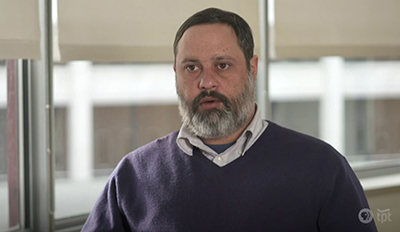
Tony Fernando, aviation and safety enforcement for the Office of Aeronautics, reviewed safety guidelines during the "Out of the Box" drone safety video produced by Twin Cities Public Television. |
For those people who found a drone under the tree, MnDOT wants you to know that these new aircraft come with state and federal regulations that require attention.
First, before you fly, you must register your drone. Visit the Federal Aviation Administration website for more information.
After registering your drone, review the following safety guidelines:
- Prepare—the easiest and safest way to learn to operate a drone is to get help from an experienced individual or group. Many communities have drone clubs and stores that may be a good resource for this information. Become familiar with your drone’s user manual. For example, your drone may need a software update before it can be flown.
- Plan where you will fly—learn local restrictions regarding where drones can be flown and how to get permission to fly in appropriate airspace. An airspace application for either IOS or Android phones will help you identify safe places for drone flights. On the Apple App Store or Google Play, search for “drone flight planning” or “drone airspace”.
- Proper area for drone flights—identify a clear area away from people to fly your drone. Many pilots will crash their first drone more than once. Be aware that along with damaging property, drones may also injure people. Minnesota law states that drone pilots are “absolutely liable for injury or damage to persons or property on the land or water.” Hitting someone with your drone may result in charges of reckless endangerment. Drone pilots are encouraged to have insurance in case of injury or damage to people and property.
- Preflight inspection—just like pilots of regular airplanes, a drone pilot is required to perform a preflight inspection before each flight. Check for cracks in the airframe and propellers, and ensure firmware is up to date.
The Office of Aeronautics is partnering with Twin Cities Public TV to create six videos educating drone pilots on the responsibilities and opportunities of owning a drone. The videos provide a checklist of what first-time drone owners are required to do by the state of Minnesota and the FAA. The first video was prepared for the holidays. The remainder of the videos are expected to be completed by April.
The first video, “Out of the Box” is currently being broadcast on TPT to coincide with the number of new drones pilots. The video is available at: https://www.tptoriginals.org/so-you-own-a-drone-now-what/. |
 |
|

|
 |
TABLE of CONTENTS
 |
Tori Nill selected to be director of the Office of Transit and Active Transportation |
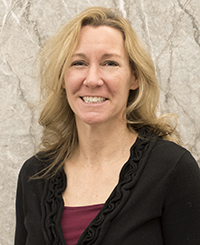
Tori Nill took over as Office of Transit and Active Transportation director Dec. 20. Photo by Rich Kemp |
Tori Nill will serve as MnDOT’s Office of Transit and Active Transportation director, replacing Mike Schadauer, who retired to pursue new opportunities. Nill, who took over as the director Dec. 20, will report directly to Tim Henkel, Modal Planning & Program Management assistant commissioner.
“I’m delighted to have Tori assume the role of OTAT Director,” said Henkel.
Nill has served as the acting director of the office since May. Prior to that she served as the acting district engineer for District 4 in Detroit Lakes. Nill has worked for several consulting firms and has spent the last 16 years with MnDOT. She has worked in various disciplines throughout the department including pre-design, final design, traffic and transit.
Nill has been involved in many aspects of MnDOT’s project development process from the Capital Highway Investment Plan/State Transportation Improvement Plan phase, all the way through opening day of the state’s largest public works project, the Green Line Light Rail Transit project. She has also been involved in the planning, designing, constructing, opening and operating other rail projects, including Northstar, Green Line Extension, Blue Line Extension, and Gold Line Bus Rapid Transit. She has worked closely with the Federal Transit Administration, Federal Railroad Administration and Federal Highway Administration, all having unique laws, regulations and policies.
“I am excited to continue to work in the areas of transit and active transportation, areas that I am particularly passionate about,” said Nill. “My work with light rail transit projects over the past few years has broadened my appreciation for transit, biking, and walking and the importance of integrating these modes within the fabric of the work we [MnDOT] do every day. I look forward to productive internal and external working relationships in leading OTAT’s contribution to an even stronger multimodal agency.”
“With the replacement of Schadauer, the Office of Transit migration to the restructured Office of Transit and Active Transportation is complete,” said Henkel. “The new structure and leadership positions us for the future, while also ensuring more efficient delivery of mobility and accessibility services in Greater Minnesota and statewide to people who walk and bike.
“We are now moving-on to the next phase of work, making the transit and active transportation vision a reality, which involves preparing the Greater Minnesota transit and active transportation systems, MnDOT, and communities for the changing needs of transportation in the future.” |
 |
|

|
 |
TABLE of CONTENTS
 |
New policy to make highway construction project selection more transparent |
By Philip Schaffner, Office of Transportation System Management
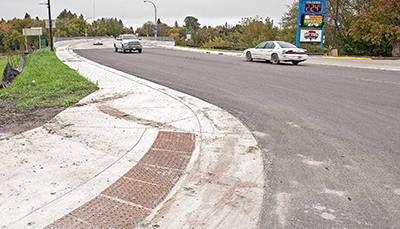
MnDOT will now use scores to prioritize and select highway construction projects. Photo by David Gonzalez |
How MnDOT selects state highway construction projects has been a mystery to many both inside and outside the agency for years.
A 2016 Legislative Audit found that MnDOT’s project selection process was not transparent. MnDOT agreed and made commitments to make the process more understandable in the Statewide Multimodal Transportation Plan and 20-year State Highway Investment Plan. Then in 2017, the Minnesota Legislature directed MnDOT to develop and implement a new transparent and objective project selection policy that used scores.
After more than a yearlong development process, MnDOT adopted the new policy in November 2018. As part of the policy, MnDOT has also published a Guide to MnDOT Project Selection.
In the process of developing the policy, staff reviewed project selection practices of other state departments of transportation and conducted multiple rounds of engagement with stakeholders.
While most local and regional partners said they trusted MnDOT’s decisions, almost no one said they understood MnDOT’s process well and most indicated that they did not know at all how MnDOT made project selection decisions.
The challenge is hardly unique to MnDOT. In fact, only 12 other states met some part of the legislatively requirements for MnDOT’s policy, and most of those states’ processes were limited to major reconstruction and expansion projects.
What is project selection?
Project selection is the decision to fund a project and add it to the list of projects to be constructed. Under the new policy, project selection is specifically the decision to add a project to either the 10-year Capital Highway Investment Plan or four-year State Transportation Improvement Program.
MnDOT selects projects within various categories and programs. For example, pavement projects are scored and prioritized separately from bridge projects. Each category and program has a separate process to evaluate, prioritize and select projects.
The selection of a project is one decision point in a long series of decisions that shape what gets constructed. Once a project is selected, MnDOT identifies and evaluates alternatives to address the identified need as well as other repairs and improvements that make sense to do at the same time. The department follows a complete streets approach, which considers the needs of all the different types of vehicles and people who will use the road or bridge. MnDOT balances all of the identified needs and opportunities against the funding guidance of MnSHIP and looks for cost-effective and affordable solutions. MnDOT also works with local and regional partners, metropolitan planning organizations, tribal governments and regulatory agencies, and seeks public input during the development of the project.
Scores and lists
The new policy makes two key changes to MnDOT’s selection process: the use of scores and publication of projects evaluated but not selected.
MnDOT will now use scores to prioritize and select highway construction projects. The scores will inform project selection decisions, but MnDOT may consider other factors in addition to the score. MnDOT will provide a short explanation when a high scoring project is not selected or when a lower scoring project is selected.
The lists of candidate projects will be posted at a new website: www.mndot.gov/projectselection. The new website will include information describing the selection processes and programs subject to this policy, including the criteria used to score and prioritize candidate projects.
Implementation
The new policy will be implemented this year with the development of the 2020-2029 CHIP and 2020-2023 STIP. The process is complex and will continue to be, but the policy should make it easier to understand.
For more information, contact Philip Schaffner at Philip.schaffner@state.mn.us or 651-366-3743. |
 |
|

|
 |
TABLE of CONTENTS
 |
Customer, employee survey reports going out next week |
District and office leadership will receive an email with their district/office-level WIG 2.0 customer and employee survey reports from the Public Engagement & Constituent Services Market Research team the week of Jan. 7. District/Office leadership are expected to distribute these reports to their staff and use the results to inform the development of district-wide Stakeholder Engagement Plans. Reports summarizing the WIG 2.0 customer and employee agency-level survey results were shared with all employees in a NoteMailer from deputy commissioner Sue Mulvihill last month. These reports are posted on the Market Research iHUB site.
As part of our biennium survey plan, the external customer survey will be administered again in 2020 and will be used to measure progress on key performance indicators within MnDOT’s 5-year Strategic Operating Plan priority of strengthening relationships.
While WIG 2.0 has come to an end, MnDOT’s goal of becoming a customer-centered agency has not. We should not only continue advancing our efforts towards strengthening relationships with our customers and partners, but also look for new ways to improve their experiences.
If you have any questions about these reports or next steps, please contact Renee Raduenz, PECS deputy director (renee.raduenz@state.mn.us or 651-366-4803) or Lizzie Pohl, Market Research assistant (elizabeth.pohl@state.mn.us or 651-366-4793). |
 |
|

|
|

|
|

|
 |
TABLE of CONTENTS
 |
Mankato employees learn about tribal history, culture, why treaties matter |
By Adrien Carretero, Office of Government Affairs
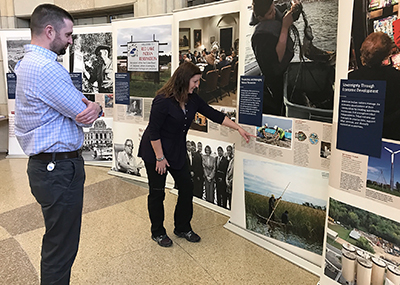
Traffic engineer Brett Paasch and Carrie Zempel, admin support, check out the "Why Treaties Matter: Self-Government in the Dakota and Ojibwe Nations" display Dec. 19 at the District 7 Mankato headquarters. Photo by Rebecca Arndt |
Understanding tribal history and culture is essential to improving tribal-transportation relations. That’s why District 7 invited Levi Brown, Ed Fairbanks and Adrien Carretero from the Office of Government Affairs’ Tribal Affairs Unit, and Teresa Martin, archaeologist in the Office of Environmental Stewardship, to the Mankato Office Nov. 29 to discuss with employees why treaties still matter today.
District 7 employees gained a better understanding of tribal sovereignty, native culture and resources available to plan and deliver projects, while taking important tribal interests into account.
The district headquarters also had on display during December an exhibit, “Why Treaties Matter: Self-Government in the Dakota and Ojibwe Nations.” This nationally recognized, award-winning, traveling exhibit explores historical relationships between Dakota and Ojibwe Indian Nations and the U.S. government in this place now called Minnesota. Through a video presentation and 20 banners featuring text and images, people can learn how treaties affected the lands and lifeways of the indigenous peoples of this place, and why these binding agreements between nations still matter today.
The display is made in partnership with the Minnesota Indian Affairs Council and the Smithsonian’s National Museum of the American Indian.
Others districts or offices can request the exhibit for their locations by contacting Jennifer Tonko with the Minnesota Humanities Center at 651-772-4264 or at jennifer@mnhum.org.
Employees also are encouraged to explore the virtual exhibit at http://treatiesmatter.org/exhibit/.
Traffic engineer Brett Paasch and Carrie Zempel, admin support, check out the “Why Treaties Matter: Self-Government in the Dakota and Ojibwe Nations” display Dec. 19 at the District 7 Mankato headquarters. |
 |
|

|
 |
TABLE of CONTENTS
 |
As he leaves, Zelle proud of MnDOT, its accomplishments |
By Commissioner Charlie Zelle
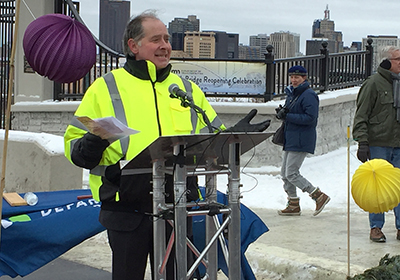
Commissioner Charlie Zelle joined local legislators, community partners and more than 100 community members Dec. 2, to celebrate the grand opening of the Smith Avenue High Bridge in St. Paul. Photo by Kevin Gutknecht |
It has been an interesting, exciting and fulfilling six years since I walked through the front doors of MnDOT. We’ve taken on many significant challenges and had outcomes that will serve the people of Minnesota for decades to come.
During my first week on the job, I addressed a transportation committee at the state Legislature. It was then that I began to realize what a large and complex agency this was. And, I also saw the tremendous reach and impact MnDOT has across the state.
A few weeks later, I spoke to a Senate Transportation committee in a confirmation hearing. During that event, I told them that transportation is the bedrock of Minnesota’s economy and supports jobs and ultimately the state’s prosperity.
Later that winter, I rode a plow during a snowstorm to learn what operators do. I was amazed at the skill and dexterity with which the driver maneuvered that huge vehicle down the road, threading through traffic and ensuring the roads were clear and safe. I was also impressed with the ownership of the infrastructure that the driver had. He was a maintenance worker who worked on the same roads he plowed in the winter. He was proud of the system, proud of his work and proud of MnDOT.
What I learned from those experiences, and many others over the years, is that MnDOT is staffed with dedicated, hard-working professionals who perform an increasingly complex and important job. That dedication is evident at all levels of the organization and in all of our many locations across the state.
It has been a tremendous honor and pleasure to work with all of you as we have moved ahead building a multimodal transportation system that maximizes the health of people, the environment and our economy.
And I am exceedingly proud of our efforts around diversity and inclusion. Using the reach and impact we have across the state, we are in a prime position to ensure that everyone has access to what we plan, what we spend and what we build. We are working to right wrongs from the past and to develop an agency that ensures equality and fairness in its ranks now and in the future.
There are many other things I would like to say, but there isn’t space or time. We put together a video that covers some of those topics, which you can find here: https://youtu.be/QLuX1hpQj1E.
As I leave this agency, I know it is in a good place. We have established some strong policies and programs that will help us to continue to grow and manage the transportation system in a thoughtful and responsible way for all Minnesotans.
I thank you for all you have done and for the support you’ve given me and the senior leadership team. I feel so fortunate to be able to say that I led this magnificent organization.
|
 |
|
| |
|



